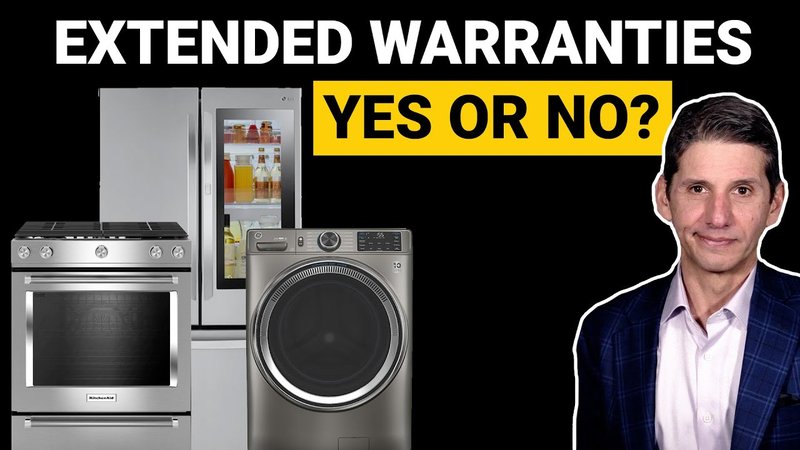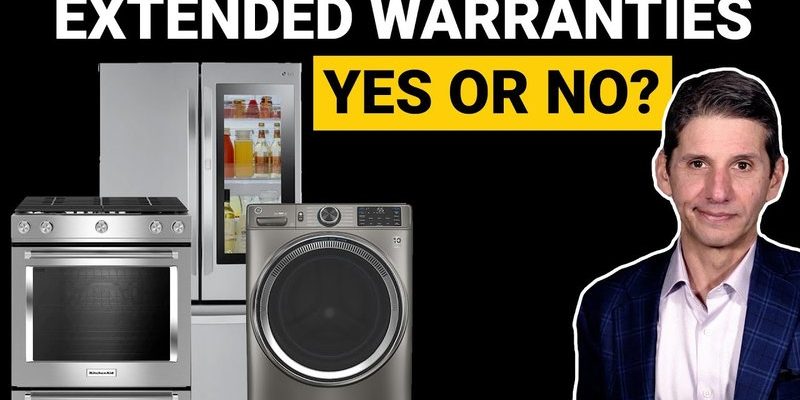
Here’s the thing—appliances like Whirlpool refrigerators are built to last, but they’re also complex machines with electronics, compressors, and cooling systems working together. Like a car, sometimes parts need fixing, and that’s when repair bills can sneak up on you. An extended warranty promises to cover those surprises, but it can feel a bit like a gamble. Let me explain what you should consider before deciding if an extended warranty is right for your Whirlpool fridge.
What Exactly Does an Extended Warranty Cover for Whirlpool Refrigerators?
Extended warranties typically pick up where the manufacturer’s standard warranty leaves off. Whirlpool refrigerators usually come with a one-year limited warranty that covers parts and labor for manufacturing defects. Sometimes, there’s an extra few years on the sealed refrigeration system, like the compressor. But after that, any repairs are all on you.
Extended warranties often cover repairs due to mechanical breakdowns or electrical failures. This might include fixing or replacing the compressor, fans, ice makers, or control boards. But—and here’s where it gets tricky—not all warranties cover everything. Some exclude routine maintenance, cosmetic damage, or damage caused by improper use.
Think of the extended warranty as a safety net for when your fridge’s “heart” (the compressor) or “brain” (the control board) stops working. If these parts fail, repairs can sometimes run into hundreds of dollars. So, the coverage can be helpful—but be sure to read the fine print. Some plans require you to use authorized technicians or charge service call fees, which add to the cost.
How Often Do Whirlpool Refrigerators Actually Need Repairs?
You might be wondering how likely it really is that your Whirlpool fridge will break down after the manufacturer’s warranty expires. Honestly, Whirlpool has a pretty solid reputation for reliability compared to some other brands. That said, no refrigerator is immune to wear and tear over time.
Common issues people face with Whirlpool refrigerators include:
- Compressor failure
- Thermostat or temperature sensor malfunctions
- Water filter or ice maker problems
- Electrical control board glitches
Repairs for these can be straightforward or pricey, depending on the part. For example, replacing a compressor might cost over $400, while swapping out a simple water filter housing might be under $100.
Here’s a little inside scoop: If you’re handy with troubleshooting—like knowing how to reset the control panel or replace the water filter yourself—you can avoid some service calls. But if you’d rather not fiddle with codes or syncing parts (like re-pairing ice maker components after repairs), the warranty could give peace of mind.
Cost vs. Benefit: Does an Extended Warranty Make Financial Sense?
Let’s talk money—always the big question. The cost of an extended warranty for Whirlpool refrigerators can range anywhere from $100 to $300 or more, depending on the duration and coverage. On the flip side, repairs usually start getting expensive when major components fail.
Here’s a simple way to think about it:
- Extended warranty cost: predictable upfront expense.
- Potential repair cost: uncertain, but can be high.
If your fridge is a high-end Whirlpool model with advanced features—like smart controls or a built-in water dispenser—the repair bills can be steeper. The warranty might pay out more often in those cases.
But if you’re buying a basic model and plan to keep it for only a few years, chances are the fridge will run fine without costly repairs. Also, you could set aside the money you’d spend on a warranty into an emergency repair fund instead. It’s like betting on whether you’ll need a flight cancellation insurance on a short trip—sometimes it’s worth it, sometimes you walk away empty-handed.
Are There Alternatives to Buying an Extended Warranty?
Here’s the thing: extended warranties aren’t your only option for protecting your Whirlpool refrigerator.
- Credit card protection: Some credit cards automatically extend the manufacturer’s warranty for free when you buy an appliance with them. Worth checking your card benefits.
- Homeowner’s insurance: Some policies might cover appliance breakdowns, especially if the damage results from other causes like power surges.
- DIY troubleshooting: Learning simple fixes—like resetting the fridge’s control board or changing filters—can save you money and hassle.
- Regular maintenance: Cleaning coils, replacing water filters on time, and checking door seals can prevent problems before they start.
These alternatives aren’t foolproof, but they can reduce your risk without adding warranty expenses. For example, if you notice water pooling or your Whirlpool fridge won’t sync with the ice maker after a power outage, you might be able to fix it with a simple reset.
What to Look for When Buying an Extended Warranty for Whirlpool Refrigerators
If you decide an extended warranty makes sense, here’s what you should keep an eye on:
Coverage Details
Make sure it covers the parts that are most likely to fail—like compressors, fans, and control boards—and not just tiny components. Also, check if labor costs or service calls are included, since those can add up.
Service Providers
Does the warranty require you to use Whirlpool-authorized repair technicians? This is important because unauthorized repairs might void your coverage. Also, authorized techs usually have the right parts and training to handle your model.
Claim Process
Find out how easy or hard it is to file a claim. Some companies make it a straightforward phone call or online form. Others might require a lot of paperwork or service visits before approving repairs.
Length and Price
Check how many extra years the warranty covers and balance the price against your expected usage. A longer warranty with a high cost might not be as good a deal if you plan to upgrade your fridge in a few years.
When Does an Extended Warranty for Whirlpool Refrigerators Make the Most Sense?
Honestly, extended warranties aren’t for everyone. Here’s when they tend to be most useful:
- Long-term owners: If you plan to keep your Whirlpool fridge for more than 5 years, the warranty can cover costly repairs that crop up later.
- High-end models: Fridges packed with tech features can be expensive to fix, so extra coverage helps protect your investment.
- Low or no repair tolerance: If the thought of unexpected repair costs stresses you out, paying a bit extra upfront can be reassuring.
- Limited DIY skills: If you’re not comfortable with troubleshooting or repairs, the warranty offers peace of mind and professional support.
If none of these fit your situation, you might be better off skipping the extended warranty and relying on regular maintenance, credit card perks, or setting aside repair savings.
Final Thoughts: Is an Extended Warranty Worth It for Your Whirlpool Refrigerator?
Deciding whether an extended warranty for a Whirlpool refrigerator is worth it comes down to how you weigh costs, risks, and peace of mind. Think of it like choosing car insurance: you want to protect yourself without overpaying for something you might never need.
Here’s the bottom line: Whirlpool fridges are generally reliable, but repairs after the manufacturer’s warranty can be pricey if major parts fail. If you’re the kind of person who hates surprises and plans to keep the fridge for a long time, an extended warranty can be a helpful safety net.
On the other hand, if you’re comfortable troubleshooting simple issues, keep your appliance well maintained, and don’t mind saving money for repairs when they come, you might be better off skipping it—or exploring alternatives like credit card benefits.
Whichever path you choose, understanding the coverage and costs helps you make an informed decision—so your chilled drinks stay cold without chilling your wallet.
